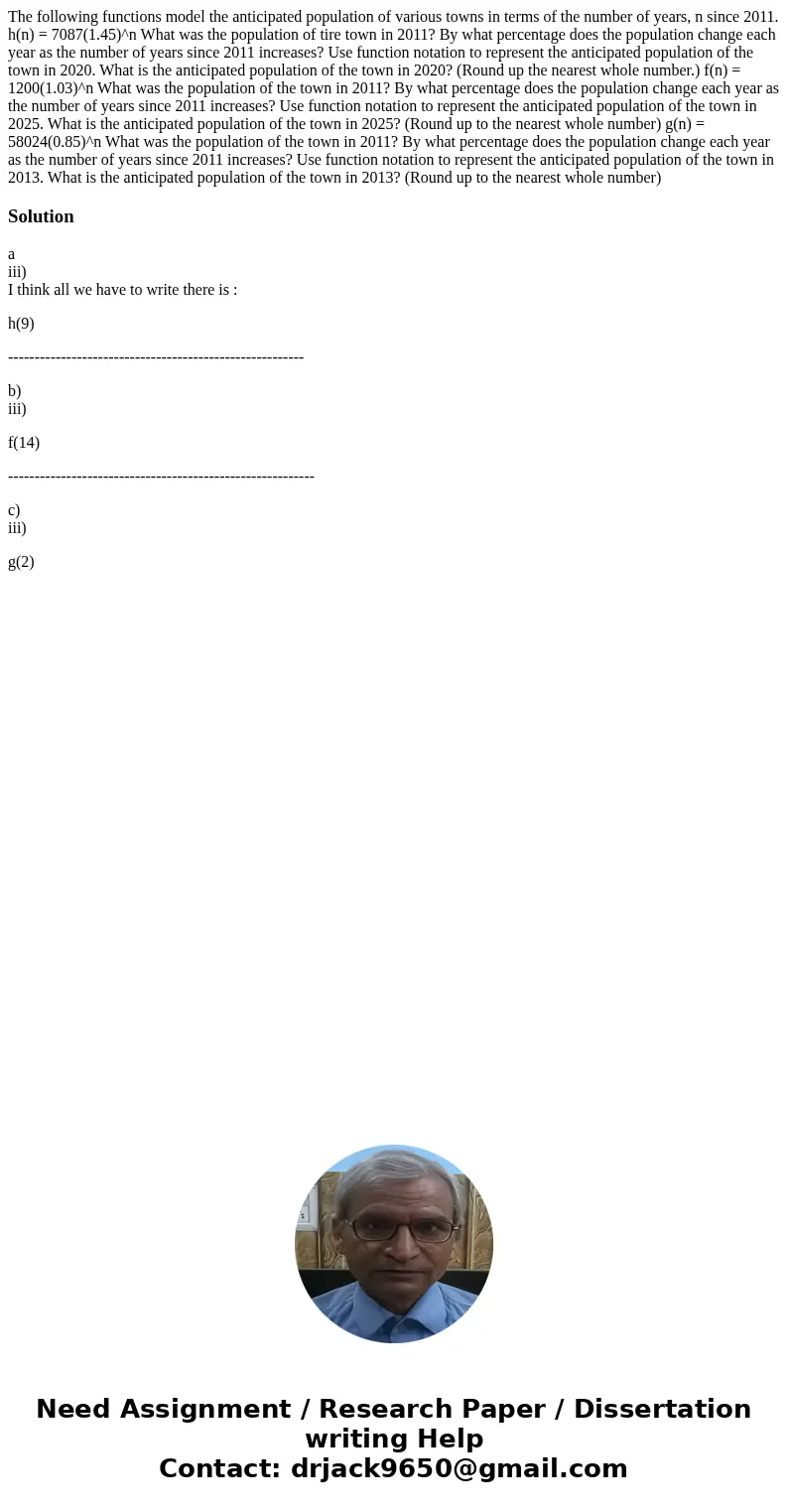The following functions model the anticipated population of
The following functions model the anticipated population of various towns in terms of the number of years, n since 2011. h(n) = 7087(1.45)^n What was the population of tire town in 2011? By what percentage does the population change each year as the number of years since 2011 increases? Use function notation to represent the anticipated population of the town in 2020. What is the anticipated population of the town in 2020? (Round up the nearest whole number.) f(n) = 1200(1.03)^n What was the population of the town in 2011? By what percentage does the population change each year as the number of years since 2011 increases? Use function notation to represent the anticipated population of the town in 2025. What is the anticipated population of the town in 2025? (Round up to the nearest whole number) g(n) = 58024(0.85)^n What was the population of the town in 2011? By what percentage does the population change each year as the number of years since 2011 increases? Use function notation to represent the anticipated population of the town in 2013. What is the anticipated population of the town in 2013? (Round up to the nearest whole number) 
Solution
a
iii)
I think all we have to write there is :
h(9)
--------------------------------------------------------
b)
iii)
f(14)
----------------------------------------------------------
c)
iii)
g(2)

 Homework Sourse
Homework Sourse